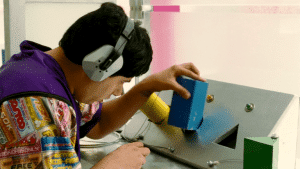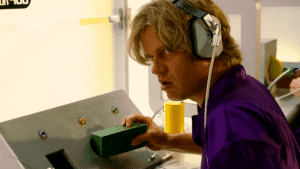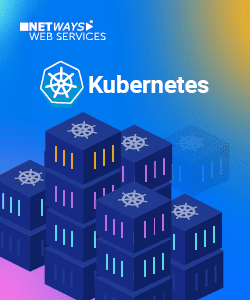Another entry of this somewhat cathartic short series. In the previous post, I already have included a lengthy introduction, so there is no need for this anymore.
Let’s dive directly into todays topic: Fibre
Fibre is easy: light goes in on one end and in a matter of nanoseconds reaches the other end of your cable. Voila, data transferred.
Always keep in mind that you can’t conduct electricity via your fibre installation. So you have to use some kind of media converter to let your data travel. A switch might serve the same purpose.
Everybody knows about the difference between multi mode and single mode fibre, right? Actually, you don’t necessarily need to know the exact difference. Just be aware to not mix them.
Not mixing means from start to finish. Just because there is a patch panel in between, you can’t magically switch from single mode to multi mode. And vice versa, obviously.
This concerns not only the fibre itself but also the transceiver which you have to plug into your active network component.
Be sure to always have the correct transceiver for your switch/firewall model. Avoid mixing SFP, SFP+, SFP WDM and SFP with RJ45 jack. Of course the difference multi mode ./. single mode still applies.
You might have heard of GBIC. You will know when you have to use it.
Also, have a look at DAC cabling for your system. Of course you use uniform hardware, don’t you?
Speaking of uniformity: you know exactly which kind of connector types you will need for your installation. If not, look closely and keep asking yourself why you can’t plug in your connectors.

Copyright: Twentieth Century Fox

Copyright: Twentieth Century Fox
On the other hand you might have to use adapting cables, as the preexisting installation tells you so. No, a knife won’t do the trick.
Also be prepared to disjoint your patch cables to switch a and b channels. Have fun rejoining them.
For having a colourful setup, make sure all your fibres come in different colours. There is a colour code in place, but how can you express your individuality best if not using colour?
As there is no interference between the optical medium and your ethernet cabling, there is no need to route your cables separately. Todays fibre isn’t as brittle as it has been in the previous millenium. You are free to pull or twist them – you might simply intertwine your fibre in your rats nest of Cat.7 cables.
This will save mm³ of space in your rack, and rack space is expensive! (cherry on top: try to match the colour of fibre and copper jackets)
To give your datacenter the last polish, you should have plasterboard (AE: drywall) all over the place. For the perfect finish, make sure, sanding takes place while you’re doing your fibre cabling.
Only this will guarantee best results of your cleaning kit.
(/sarcasm)


















0 Comments